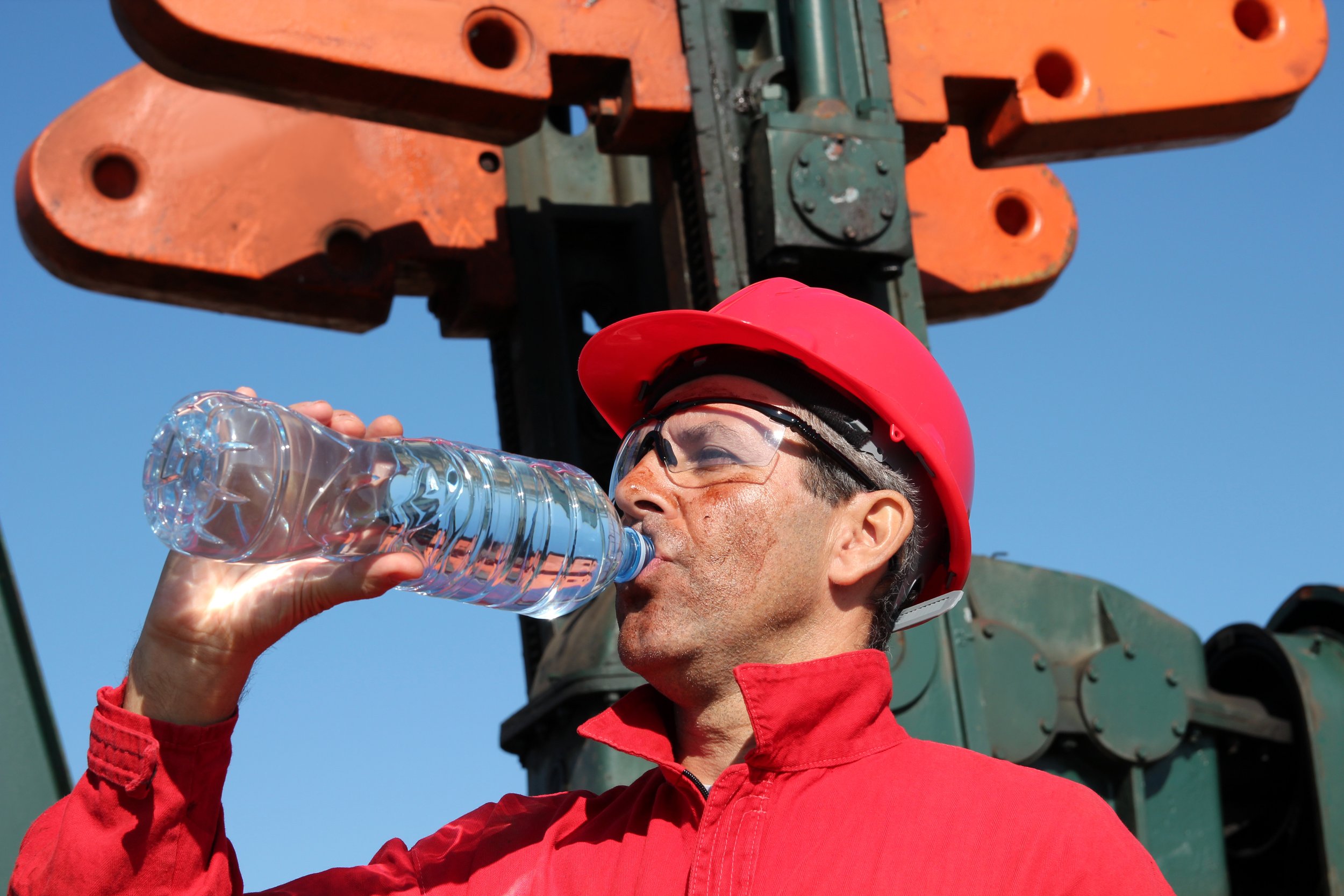
Toolbox Talk: Heat-Related Illness
Each year approximately 620 workers die from heat-related illnesses. While we can’t always control our working conditions, we can recognize the potential hazards and take steps to ensure that everyone goes home safely at night. Identifying the signs of heat-related illnesses could save someone’s life.
Heat stroke, the most serious form of heat-related illness, happens when the body becomes unable to regulate its core temperature. Sweating stops and the body can no longer rid itself of excess heat. Signs include confusion, loss of consciousness, and seizures. Heat stroke is a medical emergency that may result in death, seek medical attention immediately!
Heat exhaustion is the body's response to the loss of water and salt from heavy sweating. Signs include headache, nausea, dizziness, weakness, irritability, thirst, and heavy sweating.
Heat cramps are caused by the loss of body salts and fluid during sweating. Low salt levels in muscles cause painful cramps. Tired muscles—those used for performing the work—are usually the ones most affected by cramps. Cramps may occur during or after working hours.
Heat rash, also known as prickly heat, is a skin irritation caused by sweat that does not evaporate from the skin. Heat rash is the most common problem in hot work environments.
OSHA has a FREE app for all smartphones “OSHA Heat Safety Tool by U.S. Department of Labor.” This app can calculate the heat index and risk level. It also has signs, symptoms, and first aid information.
Ways to avoid heat-related illnesses:
• Drink plenty of water and sports drinks (Gatorade, Powerade, etc.), not energy drinks (Monster, Red Bull, etc.) as these dehydrate you more.
• Take breaks in the shade and more frequently when you have a higher heat index.
• Avoid direct sun when possible.
• Limit time in spaces with low air circulation (confined spaces).

